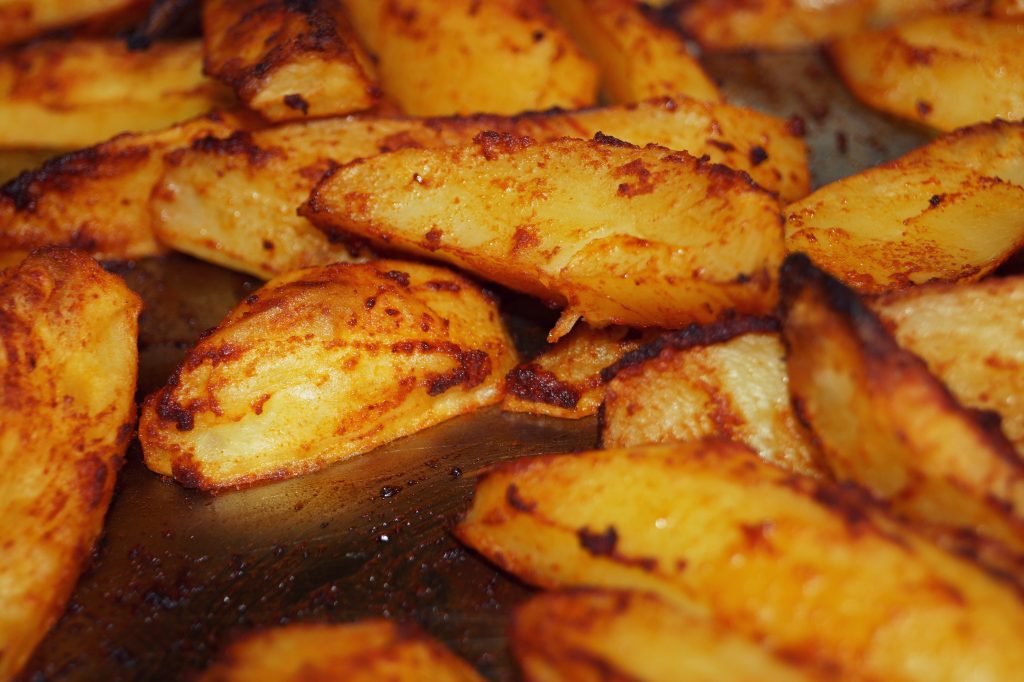
Introduction
Roasting vegetables is a culinary art that elevates ordinary ingredients into a sumptuous delight. The process brings out the natural sweetness and intensifies the flavours of vegetables while maintaining their texture and nutritional value. Whether you’re an aspiring home cook or a seasoned chef, perfecting the art of roasting vegetables is a valuable skill. In this comprehensive guide, we’ll walk you through the steps to achieve the perfect roasted vegetables every time. From choosing the right vegetables to seasoning and cooking techniques, you’ll learn the secrets to turning simple ingredients into a mouthwatering masterpiece.
Section 1: Choosing the Right Vegetables
Not all vegetables are created equal when it comes to roasting. Some, like root vegetables, bell peppers, and cruciferous vegetables, are ideal candidates for roasting because they hold up well to high heat and develop rich flavours. Here’s how to select the right vegetables:
1. Root Vegetables
Options like carrots, potatoes, sweet potatoes, and parsnips are hearty and roast beautifully. They caramelize and become tender with a slightly crispy exterior.
2. Bell Peppers
Bell peppers add vibrant colour and a sweet, smoky flavour when roasted. You can roast them whole or slice them into strips.
3. Cruciferous Vegetables
Broccoli, cauliflower, and Brussels sprouts roast wonderfully, creating a delightful combination of crispy edges and tender insides.
4. Squash
Varieties like butternut or acorn squash develop a sweet and creamy texture when roasted. Cut them into bite-sized pieces for even cooking.
5. Onions and Garlic
These aromatic additions infuse the entire dish with incredible flavour. Roast them alongside other vegetables or on their own.
Section 2: Preparing the Vegetables
Properly preparing the vegetables is essential for even cooking and achieving that perfect roast. Here are the key steps:
1. Wash and Dry
Begin by washing your vegetables under cold water and patting them dry with a kitchen towel. Dry vegetables will roast better and develop that desirable crispy texture.
2. Cut Uniformly
For consistent cooking, try to cut your vegetables into uniform-sized pieces. This ensures that all pieces cook at the same rate.
3. Remove Excess Moisture
Some vegetables, like zucchini and eggplant, release excess moisture when roasted. To prevent sogginess, salt them and let them sit for 15-20 minutes. Then, blot them with a paper towel to remove the excess moisture.
4. Coat with Oil
Drizzle your vegetables with a high-heat cooking oil, such as olive oil or grapeseed oil, and toss them to coat evenly. The oil helps with browning and adds a luxurious flavour.
Section 3: Seasoning and Flavouring
The magic of roasting vegetables is in the seasoning. While a simple combination of oil, salt, and pepper can create fantastic results, experimenting with various seasonings can take your roasted vegetables to the next level. Consider these flavouring options:
1. Herbs and Spices
Fresh or dried herbs like rosemary, thyme, oregano, or spices like paprika, cumin, and chili powder can infuse unique flavours.
2. Citrus Zest
Grate some lemon or orange zest over the vegetables before roasting for a refreshing twist.
3. Parmesan or Other Cheese
Grated Parmesan cheese or other hard cheeses can add depth and savory richness to your roasted vegetables.
4. Balsamic Vinegar
Drizzle a bit of balsamic vinegar or glaze over the vegetables before or after roasting for a sweet and tangy flavour.
5. Garlic and Onion Powder
Enhance the savoury notes by adding these powders to your seasoning mix.
Section 4: Roasting Techniques
The cooking technique you employ can greatly affect the outcome of your roasted vegetables. Here are some essential techniques to consider:
1. High Heat
Roast vegetables at a high temperature, typically around 425-450°F (220-230°C). The intense heat encourages caramelization and browning while keeping the insides tender.
2. Single Layer
Spread the vegetables in a single layer on a baking sheet, ensuring they aren’t overcrowded. Overcrowding can lead to steaming instead of roasting.
3. Flip and Stir
To promote even browning, flip or stir the vegetables once or twice during the roasting process. This ensures that all sides receive heat.
4. Use a Baking Rack
Placing a wire rack on the baking sheet allows for better air circulation and results in crisper roasted vegetables.
5. Roasting Time
The roasting time varies depending on the vegetable and the desired level of doneness. Generally, most vegetables roast within 20-30 minutes. Keep an eye on them to prevent overcooking.
Section 5: Checking for Doneness
Determining when your vegetables are perfectly roasted is crucial. Look for these signs of doneness:
1. Crisp Edges
The edges should be golden and crispy.
2. Tender Insides
Use a fork to check for tenderness. The vegetables should be soft but not mushy.
3. Even Browning
The vegetables should have an even browning across their surfaces.
4. Aroma
The delicious aroma of roasted vegetables will fill your kitchen.
5. Taste Test
Don’t hesitate to taste a piece to ensure it’s done to your liking.
Section 6: Serving and Variations
Roasted vegetables are incredibly versatile and can be enjoyed in various ways. Serve them as a side dish, toss them into salads, or use them as a filling for wraps and sandwiches. You can experiment with different seasonings and combinations to suit your taste.
Conclusion
Roasting vegetables perfectly is all about choosing the right vegetables, preparing them thoughtfully, seasoning with creativity, and employing the right roasting techniques. By following this step-by-step guide, you can transform ordinary vegetables into a delightful, flavorful, and nutritious dish that’s perfect for any meal. Whether you’re cooking for yourself, your family, or hosting a dinner party, you’ll impress your guests with your ability to create the perfect roasted vegetables every time. Happy roasting!

